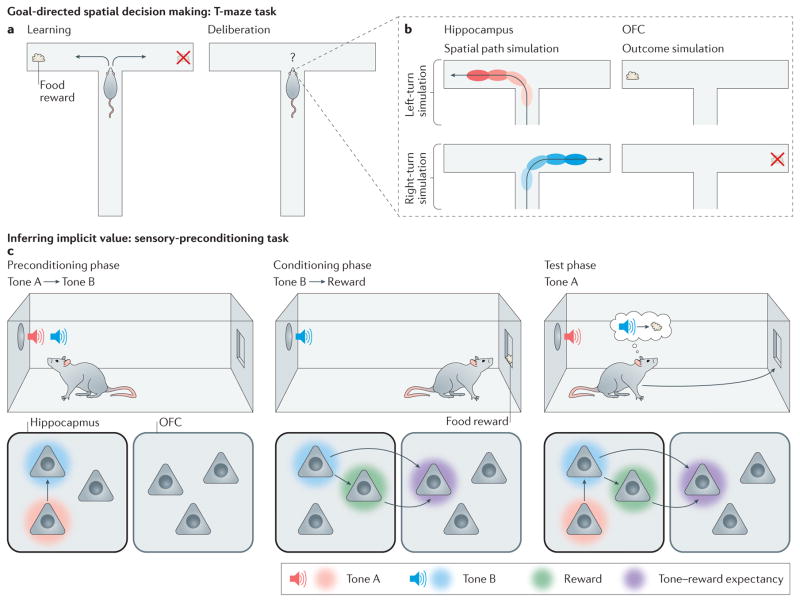Figure 2. Cognitive maps in action.
a | In the T-maze decision-making task, animals learn by trial and error that a particular pattern of choices (for example, always turn left at the choice point) will be rewarded. b | When animals deliberate over their options at the choice point, hippocampal ensembles simulate spatial trajectories towards potential reward sites. At the same time, reward-sensitive neurons in the orbitofrontal cortex (OFC) become active. It has been proposed that these neurons are engaged in outcome simulation, potentially providing a substrate for the evaluation of action plans represented by hippocampal ensembles. c | In the sensory-preconditioning task (as depicted on the top row), animals learn a predictive relationship between two neutral stimuli, such as tones, during the preconditioning phase. During the conditioning phase of this task, one of these stimuli is paired with reward. In test sessions, animals responded to the preconditioned cue that, although never directly paired with reward, predicts the occurrence of the conditioned cue. This behaviour has been likened to inference, as animals seem to correctly derive the implicit causal structure of the task (that is, tone A is followed by tone B, which is followed by a reward) despite never having directly experienced this arrangement. Lesion and inactivation data suggest a potential neural model of this task (as depicted on the bottom row) in which hippocampal ensembles encode the relationships between elemental stimuli during the preconditioning and conditioning phases of the task, and this information is accessed by the OFC to support responding during the test session.

